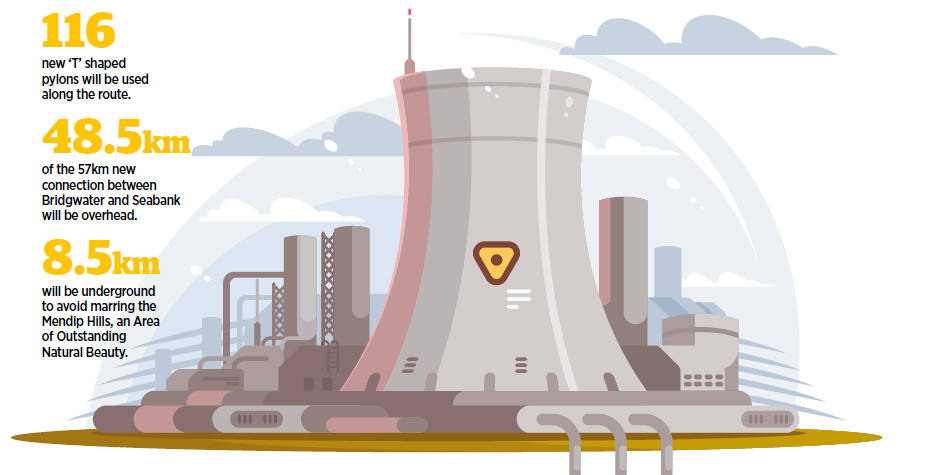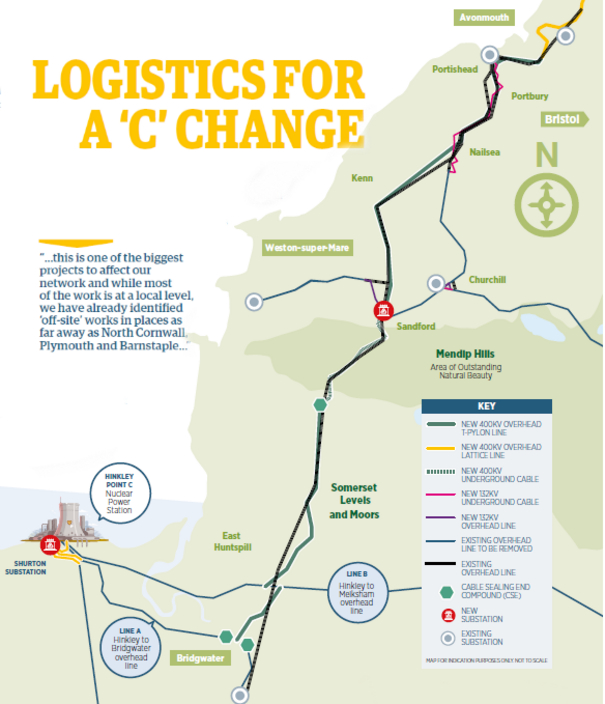Logistics for a 'C' Change
Long viewed as an important part of Britain’s low carbon future, the struggle to fund nuclear power stations repeatedly hits the headlines. But one project is now in the build phase and it’s in our area.

Hinkely Point C Project - Three key challenges requiring WPD involvement
- High profile - The need to remove existing overhead lines to accommodate the transportation of plant equipment. Each lorry will be up to 11 metres in height, meaning as the high loads pass through Bridgwater, we will have to temporarily remove lines and then replace them each time.
- Safe handover - To accommodate the new Hinkley connection and minimise impact on the local landscape, it was agreed as part of the scheme wide planning that we would remove more than 67 kilometres of existing 132kV overhead line between Bridgwater and Avonmouth. The removal will be completed by National Grid but we will have to prepare it to be handed over in a safe state.
- Going underground - The route of the new National Grid owned 400kV overhead line will be in close proximity to sections of our assets at both high and low voltage. Where this occurs small sections of our network will be moved underground.
Hinkley Point C is a 3.2GW nuclear plant being constructed in Somerset which, it is estimated, will supply low carbon energy to around six million homes when complete. It’s also the only one of the five nuclear sites planned for the UK under development. New plants at Bradwell and Sizewell have not been started. Hitachi suspended work at Wylfa Newydd in Anglesey and Oldbury in Gloucestershire last month and Toshiba pulled out of plans to build a facility in Moorside, Cumbria in November.
Work on this national infrastructure project has already had a significant impact on our network to accommodate the challenges of the build. See map below.

Far Reaching Impact
Richard Horlington, Projects Manager, (South West) explained: “It’s fair to say this is one of the biggest projects to affect our network and while most of the work is at a local level, we have already identified ‘off-site’ works in places as far away as North Cornwall, Plymouth and Barnstaple which, in time, will require switchgear replacements at 11kV and 33kV – we hope this helps people appreciate the scale and far reaching impact of this work.” Richard added: “Some of this work will be required during the initial build phase to maintain electricity supplies, while other work off-site can be completed at a later date. For example, the removal of the overhead network between Bridgwater and Avonmouth will require a new substation at Sanford."
“This will feed customers in the Weston super-Mare and Churchill areas and also requires a fibre optic connection between the new substation and the existing 132kV substation in Bridgwater.” Richard was keen to mention that support from across the business, including Primary System Design, Projects, local teams in Somerset, Weston and Bristol, Wayleaves, Engineering Design, Finance and Telecoms, has contributed to the relatively smooth running of the project so far.
"Contributions from across the different WPD teams make a positive impact on what we deliver."
"However, managing relationships with various council planning departments requires patience and understanding due to the level of detail we need to provide. We have to provide very detailed plans about what we will do as well as how we will do it. For example, in some places we have to restrict vehicle movements which can be hard to predict and is not something we generally have to be concerned about. Satisfying the planning departments can add to delays which all have a knock-on effect as well as having all our environmental and archaeological permits in place.”
To understand more about the project find regular updates at National Grid.
- Operational
